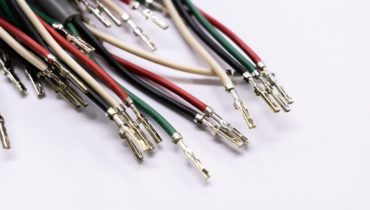Have you heard of directional drilling? You probably know that contractors need to excavate around to get to underground assets. What if there was a way to avoid large-scale excavation?
Directional drilling is a method of drilling away from infrastructure. It’s also a faster and less costly process than traditional methods such as horizontal drilling. We’ll take a look at how directional drilling is used.
How is It Done?
Directional drilling is a process used in the oil and gas industry to boreholes in a horizontal or curved trajectory. It’s done by using a drill bit that is attached to a bent sub to steer the bit on the required path. The use of Mud Motors, Rotary Steering Systems, and Measurement While Drilling (MWD) tools allow engineers to accurately control the drilling trajectory.
During directional drilling, the well is continually monitored and adjusted with the help of solid control equipment. Initially, the hole is drilled straight down like a normal well.
However, any desired angle or curve is added further down. During drilling, every section of the drill is monitored carefully. This is to determine if adjustments are needed to ensure the correct path is maintained.
What Are the Benefits
The advantages of horizontal directional drilling include extended reach, fewer surface locations, and better access to resources. By drilling at an angle, the well can be drilled deeper or to the side of a given area. This enables operators to find pockets of oil and gas that were previously inaccessible.
It also provides accurate location of production targets and greater production efficiency. This can result in a much more cost-effective well-completion process. Additionally, multi-lateral wells make it possible to keep wells in production for longer, reducing waste and allowing more resources to be recovered.
What Are the Drawbacks
The drawbacks include cost, complex engineering, and geological constraints. It requires close monitoring of the progress of the drill bit and wellbore conditions. Directional drilling also has a risk of a stuck drill string.
If the drill pipe is not adequately lubricated and drilled correctly. It may also affect the utility installation if it’s not properly done.
Additionally, the time it takes to reach the target depth can be longer than usual. Ultimately, the use of directional drilling comes with many benefits, but caution and thoughtful planning should be considered to ensure successful operation.
How Much Does It Cost
On average, the cost of directional drilling depends on the total depth of the drilling, the size of the hole, the geological conditions, and other factors. Costs can range anywhere from $250 to $500 per foot. Additional costs may include things like site preparation, wellbore stability, site security, access roads, and electricity.
Supplying the necessary equipment can also greatly affect the cost. Underground utilities may also be difficult and may affect the cost. Generally, the longer the drill length, the more expensive the job. However, the total cost can sometimes be minimized through innovative technologies or more efficient practices.
Knowing the Basics of Directional Drilling
Directional drilling is a widely used technology with many applications. Its ability to move through and around obstacles, to an exact point, makes it an invaluable tool for creating wells, laying pipelines, and more. You might also consider the non-vertical bores.
Companies that specialize in directional drilling services can easily be found online. If you need directional drilling services, reach out today. So, take the first step towards a successful project.
If you want to read more articles, follow our daily blog post.



